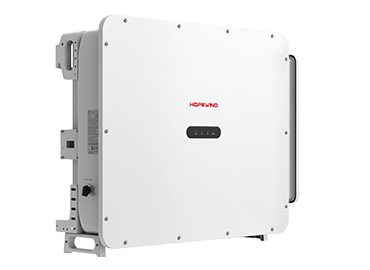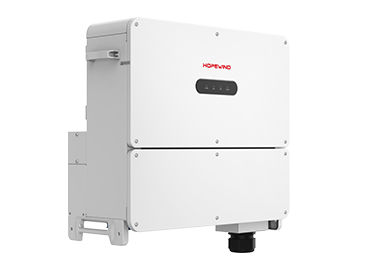SiC, known as Silicon Carbide has recently been on high uptake in China’s electric car manufacturing as the material for power control system due to its higher thermal conductivity, higher breakdown voltage, and better performance at high temperatures. Other than the application in the electric cars, it has also become a new trend in inverter technology for its distinctive advantages over IGBT units. Hopewind sees the trend and leads the technology revolution with SiC applied in its inverters.
Facing an unprecedented demand in electric vehicles and photovoltaic sectors, IGBT units have been on shortage which sees an inventory turnover of up to 54 weeks. This has become an inevitable issue for all inverter manufacturers. As a more merited alternative to IGBT modules, SiC Power devices are more outstanding regarding to their performance and stability. Global leading renewable energy solutions provider, Hopewind has applied them on its inverters, offering beyond excellent performances and stability while mitigating the impact of supply chain shortage. Compared to IGBT units, SiC stands out with these following features.

Higher ambient temperature adaptability
SiC devices have superior thermal conductivity compared to IGBTs, enabling them to operate at higher temperatures without significant degradation in performance. This makes SiC devices suitable for high-temperature environments and reduces the need for complex cooling systems. Statistics shows that SiC devices can operate steadily at up to 260 degrees while IGBTs will only not derate under 200 degrees.
Higher switching speed
SiC devices have significantly faster switching speeds compared to IGBTs. This allows for higher frequency operation and reduces switching losses, leading to increased efficiency. The Max frequency of SiC can reach 4.5GHz while it is only 2GH for IGBTs.
Higher voltage ratings
SiC's wide bandgap property as high as 3eV allows for higher breakdown voltage and lower on-state resistance compared to silicon-based devices like IGBTs whose bandgap width is of 2.2 eV at most. This enables SiC devices to handle higher voltage levels and results in lower power losses during operation.
As for the application of SiC in PV inverters, it is built to enhance the efficiency of photovoltaic inverters, reducing energy losses. With SiC, inverter’s conversion efficiency can be improved from 96% to above 99%. The SiC devices also generate less heat during operation, resulting in lower conduction loss, reducing energy loss by more than 50%. By using SiC material, inverter’s lifecycle can also be extended by 50 times, realizing higher ROI for end users. Last but not least, SiC devices offer higher power density, meaning they can handle higher voltages and currents in a smaller form factor compared to IGBTs. The DC/DC can be improved by 35%. This results in more compact and lightweight inverter design, which is advantageous in PV applications where space and weight considerations are important.
Hopewind’s applies SiC to its PV inverters that include the power classes varying from 3kW to 385kW. Through improved conversion efficiency, they reduces energy losses and operation costs.
SiC technology, being mature, offers the advantage of increased market availability. This means that there is a wider range of SiC-based components and systems readily accessible in the market. As a result, sourcing SiC-based components and systems becomes quicker and more efficient, mitigating the impact posed by the supply chain shortage issue of IGBTs , and benefiting projects with tight timelines or urgent requirements.
About Hopewind
Hopewind was established in 2007 and listed on the Shanghai Stock Exchange in 2017. The company specializes in designing and producing renewable and electrical solutions, including wind power converters, PV inverters, BESS, SVG, and industry drives.As a leading brand of comprehensive renewable energy solutions, Hopewind participated in the scientific research project Win grid supported by the EU Horizon 2020 through the DNV Netherlands Laboratory. In 2023, Hopewind’s wind power converter received the world's first grid-forming type certificate issued by DNV. Hopewind is also highly regarded as a Tier One Manufacturer of Inverter Shipments for Utility in China, and since February of 2024, the company’s385kW string inverter has been recognized as the world’s No.1 powerful string inverter. With a remarkable track record, the company has shipped over 150GW of renewable energy products worldwide by the end of 2023.


















